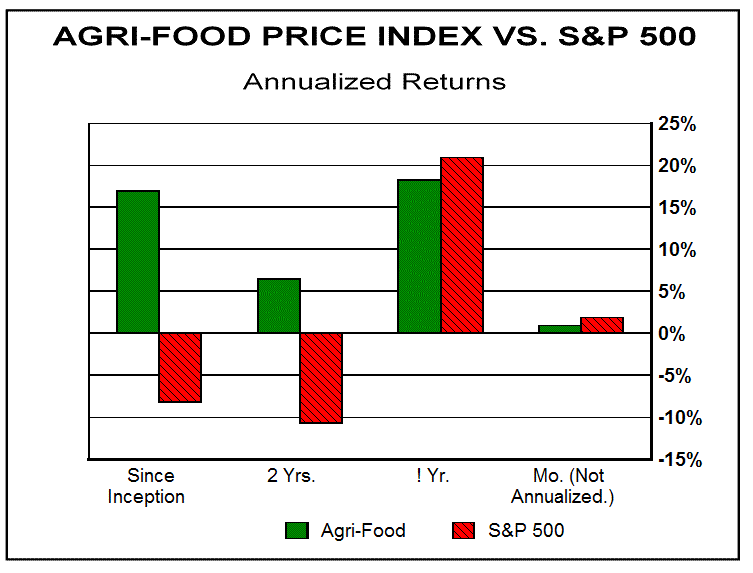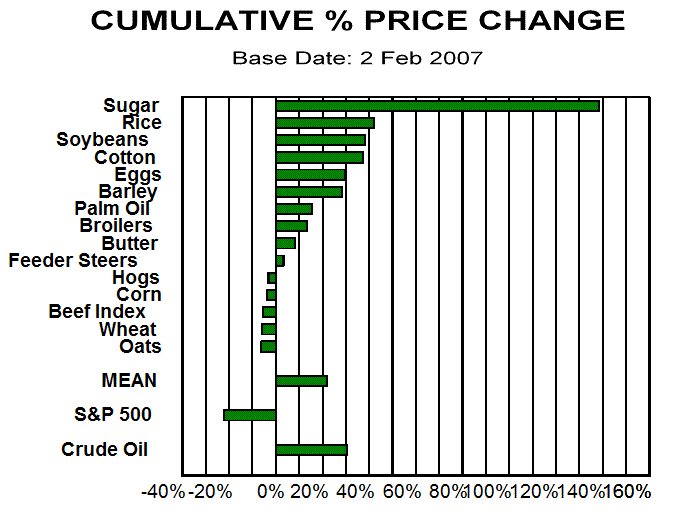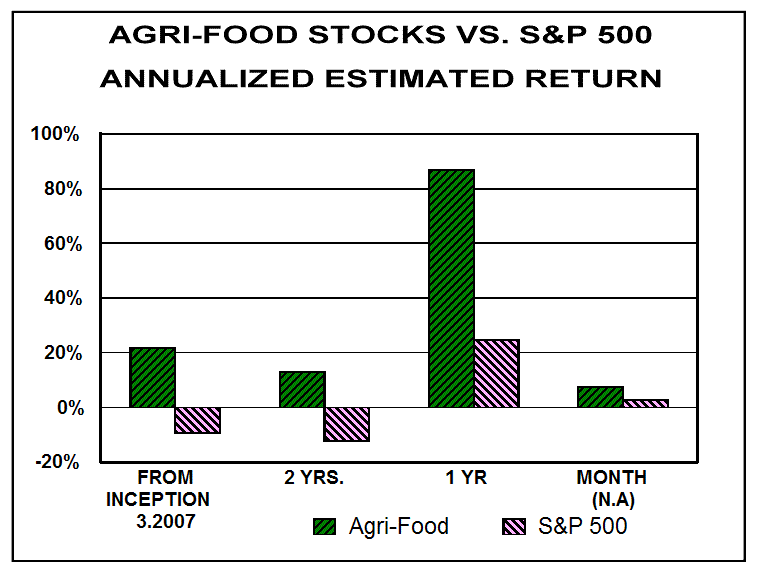Agri-Food's Investing to Profit From China and India Economic and Consumer Growth
Commodities / Agricultural Commodities Dec 29, 2009 - 02:07 AM GMTBy: Ned_W_Schmidt
 Living in Florida, as this author does, often comes with minor problems. As one of the biggest batches of cold, snowy winter storms ravages North America, records of all kinds are being broken. Dallas, as an example, had a white Christmas for the first time in 80 years. But, the UK also has problems. Winter weather there may have damaged the Brussels sprouts crop. Is that not real suffering? Relative to all that, what is our problem in Florida? Cannot remember where we put that pair of socks last year.
Living in Florida, as this author does, often comes with minor problems. As one of the biggest batches of cold, snowy winter storms ravages North America, records of all kinds are being broken. Dallas, as an example, had a white Christmas for the first time in 80 years. But, the UK also has problems. Winter weather there may have damaged the Brussels sprouts crop. Is that not real suffering? Relative to all that, what is our problem in Florida? Cannot remember where we put that pair of socks last year.
We can soon place global warming on the List of Never Happened Forecasts. That list was officially started the day after the Millennium. Also on it is a perennial favorite, going around again, of the imminent collapse of the Chinese economy. U.S. Congress is considering a law that is claimed will reduce the U.S. deficit. On the Never Happen List that goes. And a real favorite on that list is that equities never have a ten-year loss. Perhaps best of a year ago was that commodity investing was dead.

As the year is drawing to a close, our fist chart above seems appropriate. For 2009, the S&P 500 price return will likely be better than that for Agri-Food commodity prices. However, the difference is not much. That said, longer term superiority of the return provided by Agri-Food commodity prices is readily evident in that chart.
Our second chart, below, looks at the price change of the more important Agri-Food prices over the past almost three years. All of them show a percentage change better than the S&P 500. In fact a box of oats in the pantry outperformed the stock market over that period of time. Not bad for an investment theme declared dead on numerous occasions by investment gurus.

Many reasons might explain why Agri-Food prices have risen more than the value of equities. However, the principal reason is that Agri-Foods are bought to be consumed. Stocks are bought to be sold. The supply of Agri-Food is finite, while the supply of equities is infinite.
If one buys a share of IBM, that stock is moved from one investor’s portfolio to the buyer’s portfolio. It might reside there for years. It does not disappear. However, if one buys a pound of rice, the intentions of the buyer are very clear. The buyer intends to eat it. That rice will disappear, be consumed, never again to be seen. Prices for Agri-Foods are real economic transactions, not financial transactions like that purchase of IBM stock.
A further difference is that the transaction in IBM stock does not change the total supply of IBM stock in existence. A purchase of corn will be consumed, and therefore reduce the total supply of corn in existence. Agri-Food transactions reduce the available supply.
Transactions in IBM stock can continue to occur even if no new IBM stock is created. If no soybeans are produced by farmers growing it in the dirt, no future transactions in soybeans can occur. Soybeans are not produced in a factory, and neither are corn, oats, canola, etc.
The future supply of Agri-Food is influenced by today’s prices. If the price of IBM stock declines, the future supply of IBM stock will be unaffected. If the price of wheat declines today, the future supply of wheat will decline. The farmer may wish to produce wheat in the future. However, if a price sufficient to cover the costs of future planting, feeding, and harvesting of wheat is not received, ultimately the farmer will be unable to produce wheat.
Higher Agri-Food prices and larger volumes translate into revenue growth for the producers of Agri-Foods. They will spend those revenues with those vendors that provide them with everything from seed to fertilizer to machinery. Those buying from the farmers will also have higher revenues.

As our final chart above shows, the shares of those companies active in the Agri-Food revenue stream have performed quite well to date. The next year will not likely repeat the excellent results of 2009, but that may be true of all equities. That acknowledgment made, the economic prospects for these companies in the coming decade seem good.
Few opportunities exist for global investors to participate in the positive investment consequences of economic growth in China and India. Agri-Food is a sector that benefits from the higher consumer incomes and spending that flow from that economic growth. Imagine 2.4 billion consumers striving to buy the products produced and delivered by Agri-Food companies. Where else can you find such strong fundamentals? To start building your knowledge of Agri-Food use this link: http://home.att.net/~nwschmidt/Order_AgriValueRECENT.html
The response to the release of 3rd Annual U.S. Agricultural Land As An Investment Portfolio Consideration, 2009 is much appreciated. This work is the definitive annual study of the role of U.S. agricultural land in an investment portfolio. It is a rigorous statistical analysis suitable for the sophisticated investor. The 60 page PDF file is delivered via email, and is available at the following link: http://home.att.net/~nwschmidt/OrderAgriLand2009.html
By Ned W Schmidt CFA, CEBS
AGRI-FOOD THOUGHTS is from Ned W. Schmidt,CFA,CEBS, publisher of The Agri-Food Value View , a monthly exploration of the Agri-Food grand cycle being created by China, India, and Eco-energy. To receive the most recent issue of this publication, use this link: http://home.att.net/~nwschmidt/Order_AgriValue.html
Copyright © 2009 Ned W. Schmidt - All Rights Reserved
Ned W Schmidt Archive |
© 2005-2022 http://www.MarketOracle.co.uk - The Market Oracle is a FREE Daily Financial Markets Analysis & Forecasting online publication.



